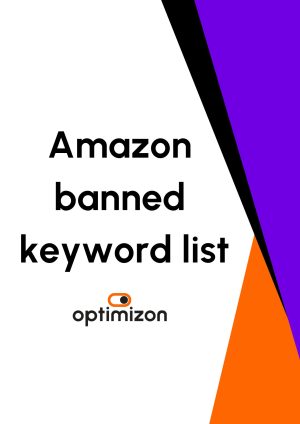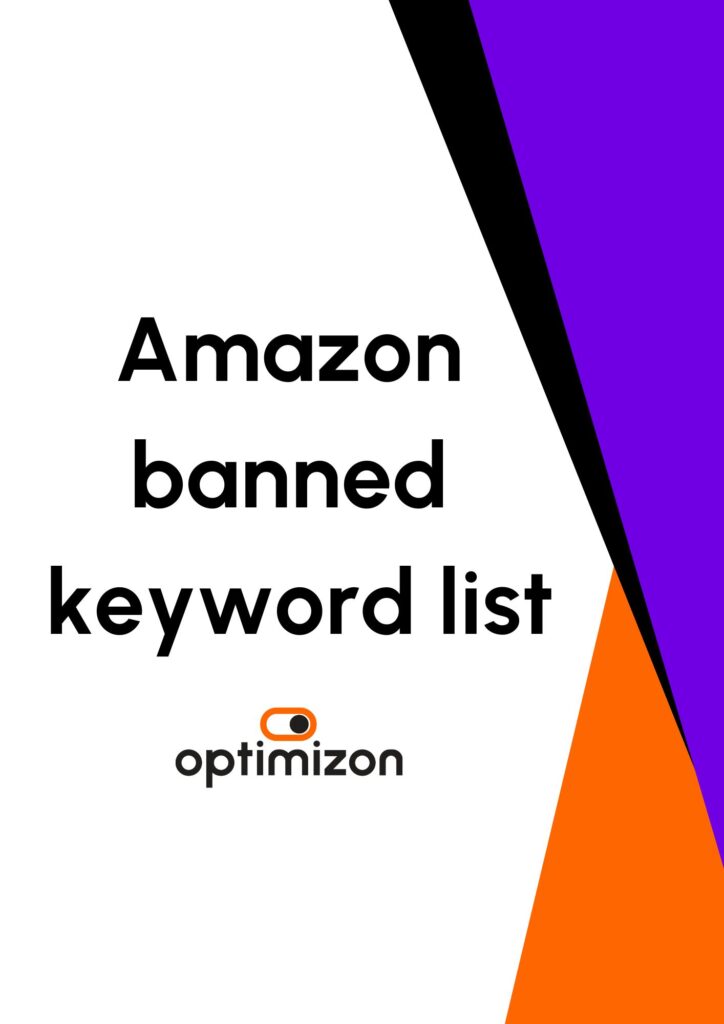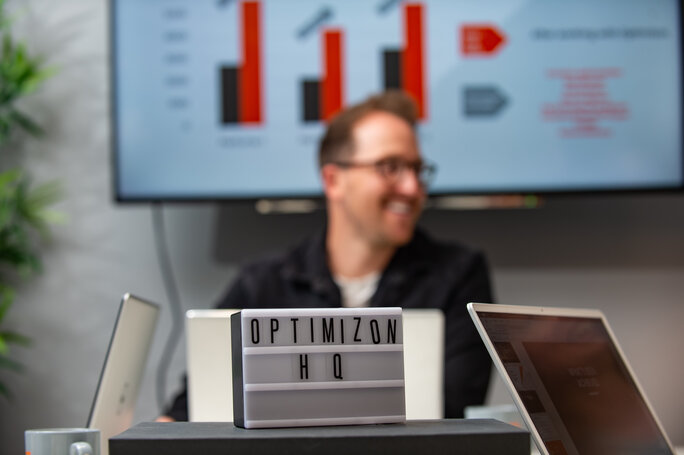The best Amazon DSP strategy for Big Brands in 2022
You are probably already aware that a Demand Side Platform (DSP) is an automated buying platform, where advertisers and agencies go to purchase digital ad inventory. This ad inventory includes banner ads on websites, mobile ads on apps and the mobile web, and in-stream video ads.
Companies such as Google and Facebook previously ruled the DSP space, before Amazon came along and shook up the ever changing market. In fact, Amazon Advertising is one of Amazon’s fastest growing and most profitable businesses.
It makes sense for retailers, especially brands, to leverage the Amazon Advertising Platform. Amazon processes the online shopping behaviour data of millions of people in real-time which can be translated into precise campaigns aimed at relevant customers. No other DSP is likely to reach consumers with buyer intent in the same way.
This has even more importance in light of upcoming changes to the use of third-party cookies. The depreciation of third-party cookies is set to shake up the digital marketing industry, leaving closed platforms such as Amazon to gain a huge competitive advantage.
Amazon DSP is available to both advertisers who sell products on Amazon and those who do not. However, sellers will experience wider advantages from using Amazon DSP.
Here, head of Marketing at Optimizon, Toni Wong, talks about the Amazon Advertising Platform, and the best Amazon DSP strategy for Big Brands in 2022.
Brands and DSP
In the past, advertising had such a simple game plan. A marketing firm was paid to formulate a campaign, produce creatives and a slogan, and often just focusing on print and broadcast media. Remember “Go to work on an egg” and “Beanz meanz Heinz”?
These days things are a bit more sophisticated and big brands are seriously able to leverage the power of online advertising. Online advertising can be more complex, but targeting has transformed the accuracy of advertising spend.
It’s essential to incorporate this option when formulating a marketing plan. Of course, every serious operator in business is already aware of this fact. But they aren’t all making the same digital advertising choices.
Look at any big brand, from Mitsubishi to Samsung to Casio. They access a variety of online strategies including Demand Side Platforms, displaying banners and videos in a pin-point manner to target specific markets and potential customers. In addition, the big players are also optimising any ad performances across different platforms and devices.
Top agencies are always looking for the highest ROAS (Return on Ad Spend). They should know that in many cases, Amazon DSP has been delivering higher ROAS than the other large DSPs in recent years (especially whilst Amazon gets a foothold into the ad market).
Even so, with years of experience behind you as a brand or agency, it can still feel like you’re entering a maze if you decide to switch spend to Amazon DSP. Particularly if you are accustomed to using other ad platforms.
Why Amazon ads will win for brands in 2022
Google, Apple and Microsoft sent shockwaves through the digital marketing industry when they announced the banning of third-party cookies from their browsers and operating systems. These cookies are being phased out right now.
Up until this point, third-party cookies have been used to gather insights on a person’s online activities and shopping behaviours, allowing digital advertisers to pin-point target their ads to the people most likely to buy their products.
The ban is disastrous for most digital marketing platforms. However, companies like Google, Facebook, and Amazon can continue to identify users across websites and devices using first-party cookies and other authentication technologies.
This will put Amazon at a particular competitive advantage, since the company will hold vast amounts of data specifically relating to ecommerce habits. Data that other platforms cannot access.
There is little doubt that now is a good time to shift ad spend onto the Amazon DSP platform in order to gain a foothold before the impact of third-party cookie depreciation really hits home.
Routes into Amazon DSP
Whilst optimising Amazon DSP is likely to require specialist help, if your company has decided to switch ad spend to Amazon DSP, accessing the platform is fairly straight-forward.
Hiring Amazon DSP Specialists
The first way into DSP with Amazon is to go through a digital advertising agency or online marketplace specialist. Ideally one that specialises in Amazon (such as Optimizon).
A good agency will handle the hassle and deliver a strategy that will meet your online targets. The aim may be to increase sales, often at a specific time period, or raise awareness about a product launch or a unique service – or all three.
Top agencies will of course cost you money. But if they deliver results, then they will pay for themselves. It’s always worth remembering that it can often work out cheaper than if you try to manage the ads in-house, using non-specialists. Both in terms of time, and achieving a lower ROAS.
We always talk about how different areas of Amazon have become increasingly specialised (understandable given Amazon is the largest marketplace on the planet). Optimizon of course employs a team of DSP specialists, and there are a myriad of other companies offering to work with big businesses. A word of warning, however; it pays to do your research before hiring any advertising or online specialist. Many companies either don’t have the specialisms to make the difference, or else they run every company account in an identikit way, without understanding their products, or the nuances that exist within your particular market.
Amazon’s managed services
The second way to access DSP is directly via Amazon’s managed services.
The managed service option is designed for companies that want access to Amazon DSP inventory, with consultative services. Or for those with limited programmatic advertising experience.
This second option requires a minimum spend of £40k upwards. This isn’t a problem for large brands. However, we tend to find that Amazon are always happy to help you spend your budget, without delivering the marginal gains that specialists can. Remember, they have to keep all of their customers happy, not just you. Whereas most specialist companies will not work with more than one brand in any given Amazon category.
Self-managed services
Your business can opt for the self-managed option. Although this requires a minimum ad spend of £100k, and at least two people to have taken Amazon DSP certifications.
Whilst some companies have a preference for bringing services in-house, rather than outsourcing to specialists, it is difficult to realise value for money from this option given the labour costs.
What is available via Amazon DSP
Like other DSPs, Amazon DSP is a software that provides automated and centralised media buying from multiple sources. Here are the types of DSP is on offer through Amazon:
The four kinds of Amazon DSP
These are the four types of ads that can be purchased via the Amazon DSP:
- DISPLAY ADS: The most common type of DSP ad, which can be shown on Amazon devices and Amazon. These ads can be linked to an Amazon Brand storepage or an ASIN. There are many options and sizes to choose from and the ads can be tailored to your branded message.
- VIDEO ADS: Amazon DSP video ads reach users through Amazon devices (Amazon Kindle), mobile apps (Fire TV) and Amazon website’s (IMDb TV). These ads can either be outstream or in-stream and can appear as an ad break on existing videos.
- MOBILE BANNER ADS: This is essentially another display ad type, but it’s worth a separate mention here. This type of DSP is popular because it allows you to reach, and target, mobile uses on high-quality applications such as iOS, Android and Fire Tablets. Banners that link to Amazon must contain a logo, and the backgrounds are always plain and simple so they are not distracting.
- MOBILE INTERSTITIAL ADS: This kind of ad displays full screen on apps, but always include a visible close button. They are supported on iOS, Android, Fire smartphones and tablets.
Tailoring Amazon DSP to your brand aims
Amazon DSP should be tailored to your needs depending on your brand’s aims. As mentioned, Amazon DSP is slightly unique because Amazon holds consumer data, rather than search data based on interests. In our experience retailers often achieve higher ROI via Amazon DSP (compared to other market leading DSP services), particularly if it is part of a wider Amazon sales strategy.
We know that Amazon works like a Flywheel, so it must be fed from all angles to get it spinning. In other words, a well-run DSP campaign will improve your organic sales.
So, whilst the best Amazon DSP strategy will depend on your aims, it is first of all important to have a presence on Amazon DSP. Beyond that, your Amazon DSP aims could include:
- You want an effective product launch (it could be a new product or seasonal campaign e.g. during a holiday period). A well thought out DSP campaign can accelerate sales growth and boost product discoverability. If Brand awareness is your goal, AMZ DSP gives access to customers on sites that other DSPs don’t have access to, I.e Amazon and the growing number of Amazon owned and operated sites (Twitch & IMDb), and across the Kindle and Fire platforms.
- Your aim is to continue to increase traffic to certain products. DSP can direct potential customers to your product pages, and there are options to target audiences based on demographics, lifestyle, interests, and more.
- Grow market share. DSP can help to reclaim customers and find new buyers. The audiences feature allows you to specifically target customers through ASIN-based data, context and in-market.
Amazon DSP strategy for Big Brands
Once your brand aims have been established, it’s important to devise a clear strategy.
Our recommended Amazon DSP strategy for big brands differs depending on the aims of your brand.
Every day, millions of people in the UK are shopping online. Amazon DSP targets customers at various points along their shopping journey. There’s often talk in marketing about “the shopping funnel”; the best strategy for your brand will target differing levels of this funnel via Amazon DSP to meet your aims.
Low Funnel DSP
One of the best Amazon DSP practices for big brands is to re-target low-funnel customers (remarketing).
Why? Low-funnel customers have either purchased from your brand previously or know extensively about one of your particular products. It’s likely that they are already familiar with what you’re selling. To use a metaphor, low-funnel customers are “low hanging fruit” and can bring in the highest return on ad spending.
Remarketing will also focus on users who are already acquainted with your brand but didn’t take action. For certain types of products, this can be hugely effective.
In this part of the funnel, utilise the following types of audiences within your campaigns:
- Re-marketing Audiences – Re-engage people that have already expressed interest in another brand’s similar offering.
- Advertiser Audiences – Incorporating your existing audiences into the Amazon Advertising campaigns to drive relevance.
This is the best Amazon DSP strategy for most big brands seeking an immediate uplift in sales. Particularly if your brand is well known, but your expansion into Amazon is fairly recent. Performance monitoring should be focused on Return on Ad Spend (ROAS).
Mid Funnel DSP
If you want to drive engagement and increase consideration of your brand over a competitor’s, then using Amazon DSP for mid funnel would be the recommended approach.
This would include tactics such as discounts, coupons and offers, or any other method of attention grabbing to divert customers away from your competitors.
Take the opportunity to reach relevant audiences that are active in your category. Provide the right context and positioning of your product to increase consideration in that customer’s journey.
- In-market Audiences – Target in-market audiences for items or services in adjacent aisles to drive brand awareness and consideration.
- Contextual Audiences – Use contextual audiences to drive consideration from people actively looking at competitive offerings.
- Re-marketing Audiences – Re-engage people that have already expressed interest in another brand’s similar offering.
Upper Funnel DSP
Then, we move to the upper funnel, which can be effective, as it increases visibility and attracts new attention to your brand. Upper funnel DSP should be a blend of reach and quality.
In terms of KPIs, Upper Funnel campaigns should focus on exposure metrics. You want to expose your ads to a larger audience. Judge performance based on impressions, click-throughs and Detail Page Views (DPV).
We would recommend leveraging the following types of audiences in the Upper Funnel:
- Lifestyle Audiences – advertisers can reach an audience that regularly purchases certain products, or products within a category.
- In-market Audiences – Target in-market audiences for items or services in adjacent aisles to drive brand awareness and consideration.
- Lookalike Audiences – Build a lookalike audience from an existing audience (your own audiences or Amazon audiences) to reach people with similar shopping behaviours.
- Demographics – Select demographic parameters you feel will most resonate with the brand.
With the upper funnel, in the majority of cases we would recommend both display DSP ads and video ads to position your brand in front of your target audience.
Be warned, upper funnel marketing can be costly if you don’t get your creatives and targeting right. Campaigns must be very well considered in order to achieve reasonable ROI.
Magic Formula
Once you’ve decided on the aims of your brand and the relevant DSP strategy (what part of the funnel you are targeting), it can be tricky to know how long to run a DSP campaigns. Given the wider benefits of running DSP campaigns on Amazon (when selling on Amazon), it is beneficial to keep high performing ads running at all times. However, if you are running ads targeting a particular date (such as Prime Day or Black Friday) popular approach is to run DSP ads 30 to 45 days prior to big sales days.
Our DSP specialists can advise which methods of targeting would work best for your brand. For big brands undertaking it themselves, and not sure which part of the shopping funnel to target, we would recommend beginning with a mix of campaigns targeted at the differing levels of the shopping funnel. Spend can then be diverted into better performing campaigns after performance can be measured.
Again, big brands are wise to maintain some presence in all parts of the shopping funnel. The ideal ratio of spend will vary depending on the market.
Measuring your Performance
With any advertising, measuring the performance of your campaign is crucial, and DSP should be no different. Before any launch, make sure you have your baseline metrics in place and you know how to interpret the data. It’s not just about those ROI figures. It is important to measure the impact at every level of your Amazon account.
Whilst Lower Funnel campaigns will undoubtably focus on ROAS, Upper Funnel campaigns should focus on exposure metrics; impressions, click-throughs and Detail Page Views (DPV).
Help with your Amazon DSP strategy
Optimizon is a leading Amazon Consultancy. We have specialists working in every area of Amazon selling, from creatives to Amazon DSP advertising. For higher return on investment and a bespoke, specialist approach, get in touch with us today.





